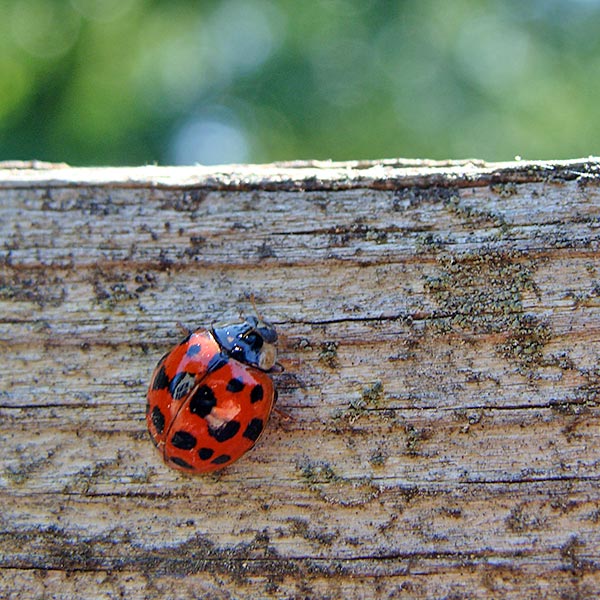Free shipping on USA orders over $129!


(Editor’s Note: I’m happy to present another very helpful nature study article from my friend, Karen. She’s a wealth of nature study ideas, and I’m sure you’ll find much to encourage you from her thoughts on how to do nature study in your own backyard—no matter how large or small it is.)
Many moms think that because nature study will most often be done in their backyard that their children will not have opportunity to see much nature. Don’t fool yourself! There are many things to observe even in the smallest of backyards.
Here is just a sample of what you can observe:
- Trees
- Shrubs and bushes
- Birds (My daughter has observed more than 80 species of birds in our subdivision yard!)
- Grasses
- Flowers
- Worms and other invertebrates
- Insects and bugs
- Spiders
- Toads
- Clouds
- Light and shadows
As you can see there is plenty that can be observed without ever leaving your yard! The trick is to find them. Worms and other invertebrates can be found by digging in the dirt, turning over rocks, or looking under dead leaves. Spiders are everywhere; look for them in flowers, near outside lights, on trees, and in shrubs.
You can make your yard more desirable to a variety of birds and animals by planting trees and shrubs, letting a corner go “wild,” and by putting out bird feeders. Bird feeders are probably the easiest way to attract birds and animals to your yard so you can observe them. Try putting out black oil sunflower seeds and some suet. These are the foods that are liked by the most variety of birds. If you have room, place a birdbath nearby too; water will attract more birds for you to observe. Be consistent in putting out seed and water and you will be rewarded. However, don’t expect to see every species of bird in the first weeks or months that your feeders are out. It takes years of careful observation to see many of the birds in your area.
“Let him know, with friendly intimacy, the out-of-door objects that come his way—the redstart, the rosechaffer, the ways of the caddis-worm, forest trees, field flowers—all natural objects, common and curious, near his home” (Vol. 2, p. 77).
A simple way to start doing nature study in your yard is to choose a tree and observe it throughout the year. Notice the shape, size, and color of the leaves. Do they grow alternately or oppositely on the branch? Notice the bark. Is it smooth, rough, bumpy? What color is it? Compare the mature bark on the trunk with the smooth bark on a young branch. Notice the shape, size, and color of the flowers. What does the fruit of the tree look like? In all these observations, note when the leaves first appear, when the tree flowers, and when the fruit is ripe. In other words, really get to know your tree.
Dedicate some weeks of your nature study to check on your selected tree, see what else you can learn about it, and track its changes through the seasons. On the weeks that you are not observing your tree, you can choose to observe birds, flowers, shrubs and bushes, insects, spiders, toads, worms and other invertebrates, sunlight and shadows, or clouds. All of those nature friends you can easily find in a yard.
As was mentioned last time, observe each nature friend until you know something of its habits. Don’t just draw a butterfly because that’s what you saw, watch the butterfly. How does it fly? Where does it go? From which plants does it drink nectar? When do you first notice it in the spring? What colors is it? Does it have any special markings to help identify it?
Close observation through regular visits over time is the path to feeling at home in nature study. Nature study is not a body of knowledge to memorize and check off as finished. It is a lifelong enjoyment—the gradual ongoing process of learning more each time you go out.

I love the ideas yet wonder how you plan. For example, you must have some plan in place to remember your tree every few weeks. And ideas for what your visiting in between. But if you’re new then you don’t necessarily know the bloom times, etc of what to observe. Does that make sense? Does it make sense to start with something like the new Ponds and Streams to get into the habit?
Yes, you would need to have a plan. You could make a list of things to observe in nature and rotate through them each time you do nature study. Or, you could use a book like The Pond and Stream Companion or Journaling a Year in Nature to guide you.
As for knowing when certain flowers bloom, certain birds migrate through your area, etc., a good field guide can help you, but you will learn those as you study nature. Every time you are outside observing nature you will add to your nature knowledge. Recording your observations in a nature journal will help you remember when to look for certain flowers in bloom, or certain birds migrating, etc.